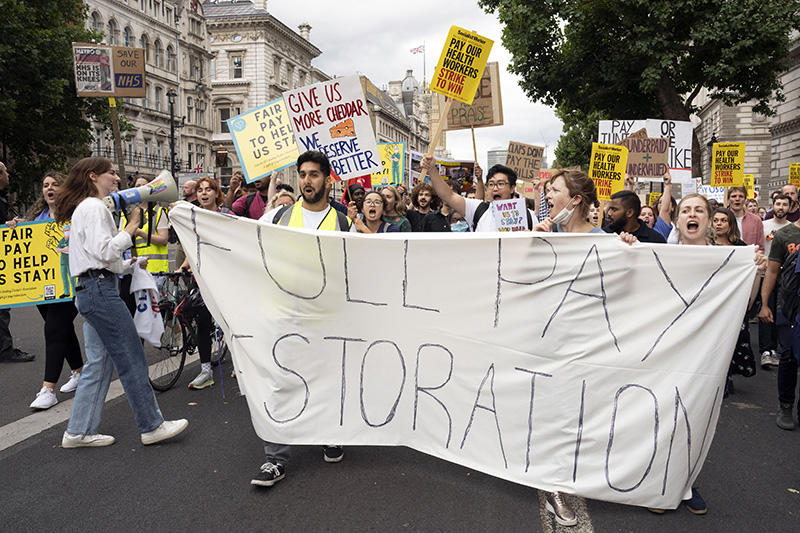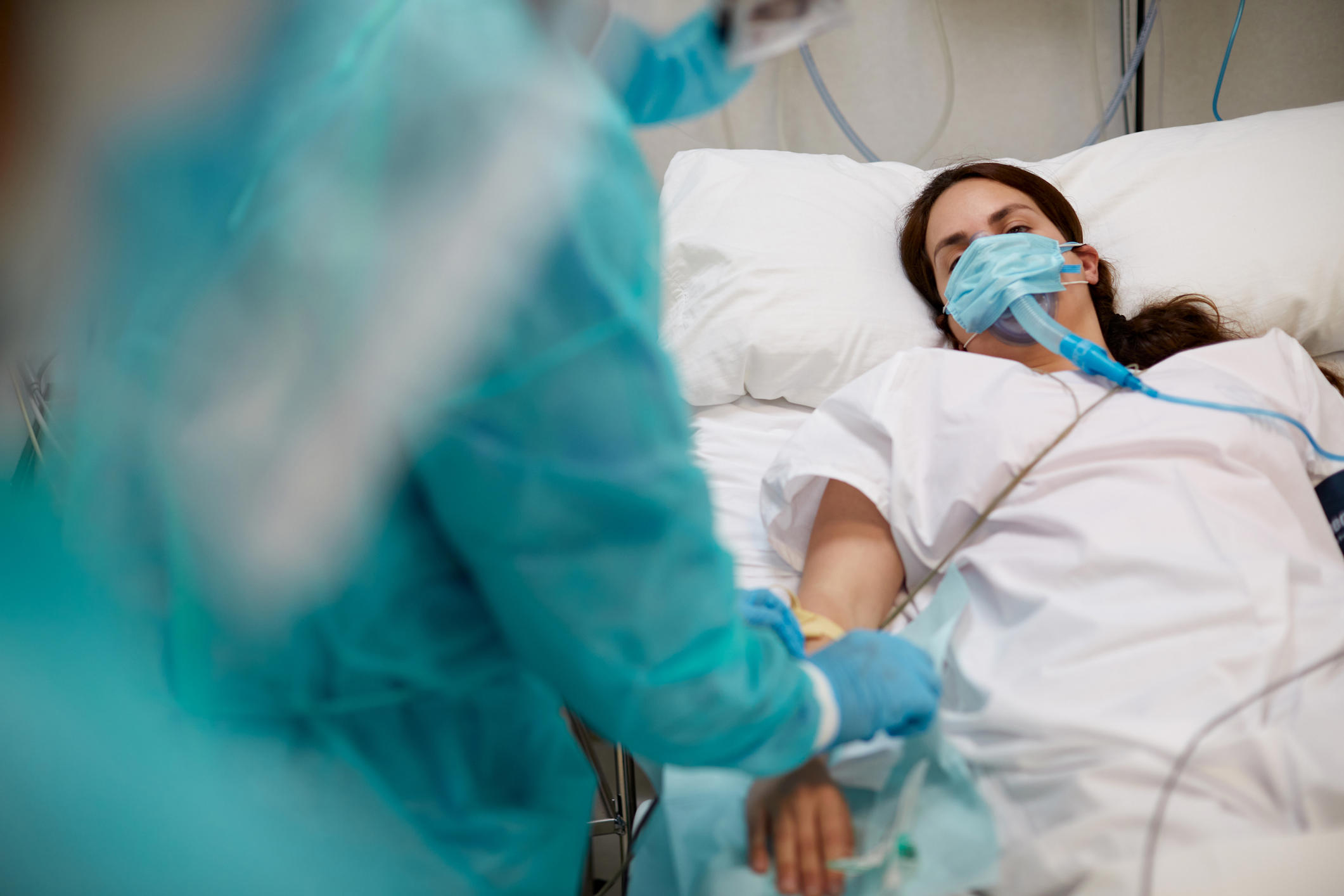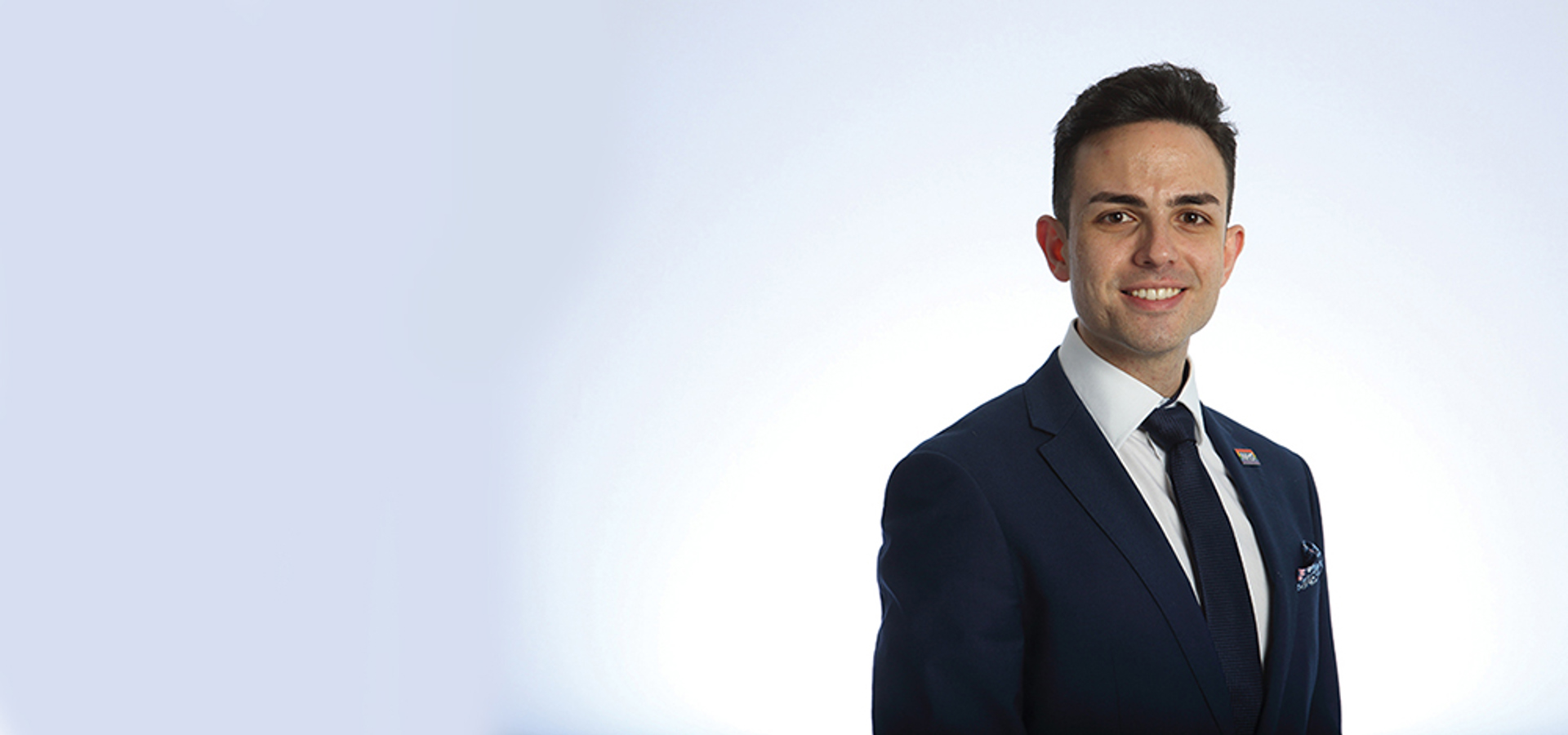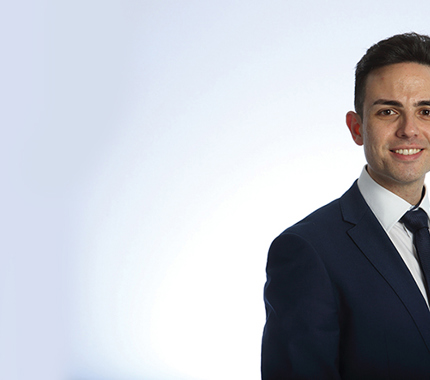‘Often I would be holding the bleep looking after three to four wards, usually about 80-90 patients.’
Vassili Crispi, a junior doctor now in his second year of foundation training (FY2) in West Yorkshire, lays bare the amount of responsibility and workload he endured on a general surgery rotation in his first year, earning as little as £14.09 an hour.
‘After ward rounds, senior members of the medical team would be busy in theatre or clinic, so you’re effectively the most senior doctor looking after patients day in, day out,’ he explains.
‘The on-call team would have been an FY1 and an SHO, who would usually be an FY2 or above, and a registrar. During those on-calls, I as the FY1 would see nearly every patient. The admission unit, with about 20 beds, would be refreshed three times a day, which meant clerking, taking bloods, writing down notes, ordering scans and escalating their management. Once I’d finished seeing a patient, another three or four had arrived waiting to be seen.’
Now working on a neurosurgery rotation in his second year, he feels his current role is ‘slightly better balanced’ with one or two doctors to every 28-30 patients. While it is ‘still a very busy job’, he says, ‘I’m actually able to take most breaks at the moment’ – unlike colleagues in other areas of the hospital.
Baptism of fire
Asked if he feels the level of staffing puts patient safety at risk, his answer is: ‘On a number of occasions, yes. More so as we head towards the winter pressures.’
COVID meant a baptism of fire for many young doctors graduating from medical school. Dr Crispi, for one, had to quickly learn how to use CPAP (continuous positive airway pressure) machines, used to deliver high-flow oxygen to unwell patients with COVID and usually operated by more senior colleagues. But, at the time, those more senior grade doctors were too stretched.
‘We had open COVID wards,’ he recalls. ‘My registrars would be in A&E looking after patients who had waited 12-18 hours.
‘So when the patients I was looking after were to deteriorate I couldn’t call a colleague; they were seeing someone else. I was often having to stabilise them in the middle of the night before someone senior could get there. I found myself, as a newly qualified doctor with only a few months’ experience, really having to step up – with a lot of responsibility to shoulder.’
By the time you deal with one patient another has deterioratedDr Crispi
Dr Crispi says ‘every doctor who goes through their training deals with a healthcare crisis’. And while this has been an invaluable yet steep learning curve that has boosted his confidence, he notes: ‘I’ve sacrificed a lot in terms of physical and mental health.
‘Spending entire days in level 3 PPE was draining; everyone on the ward would come away dehydrated because you can’t take the PPE off for hours. By the time you deal with one patient another has deteriorated, someone else needs a scan and so on. It was a never-ending job.’
Born in Italy, Dr Crispi moved to the UK at 16 and completed his higher education at Hull York Medical School in East Yorkshire. He says he was drawn to working for the NHS because the UK’s healthcare system offers a ‘more equal playing field in terms of working in healthcare and postgraduate training’ – and ultimately because he wanted to ‘make an impact on patients’ lives’.
‘We talk about saving patients’ lives, but more often than not it’s about changing patients’ lives,’ he adds. ‘The NHS is unique in that it is free at the point of access. In Italy, you might contribute a fee towards blood tests or other investigations.’
But free healthcare for all comes with a reliance on government funding. Financial pressures on the system and years of austerity have meant more than a decade of below-inflation pay awards for junior doctors: an FY2 doctor earns a basic salary of just £16.31 an hour and an FY1 £14.09.
 Junior doctors call for fair pay at a protest earlier this year
Junior doctors call for fair pay at a protest earlier this year
‘There’s a perception that doctors are part of the more wealthy population,’ says Dr Crispi. ‘What’s important is recognising the level of responsibility and risk we shoulder. Nowadays, because of understaffing and under-resourcing, most juniors undertake significant levels of responsibility.
‘When you compare the pay we receive to the level of responsibility we have, it’s not worth it, given the risks. As an FY2, the level of responsibility has increased significantly while my pay has gone up only slightly.’
The premium in doctors’ pay comes primarily from out-of-hours work which increases hourly rates, to £22.34 for FY2s and £19.30 for FY1s. However, Dr Crispi reports that on-call shifts are ‘severely understaffed’ and pay is still ‘not enough’. He says this means many junior doctors make up their pay through locum shifts.
‘On my psychiatry rotation I worked Monday to Friday, 8am to 5pm, and was paid the basic FY1 salary: around £1,600 per month,’ he says. ‘Not performing on-call duties, I was struggling to pay rent and bills – even just survive – once tax, National Insurance and student loan repayments had been taken off.’
I often worked two 12-hour shifts on Saturdays and Sundays to pay billsDr Crispi
‘It’s routine nowadays that nearly every colleague will do some locums somewhere else, and check which extra shifts pay the best, which are often during weekends or overnight.
‘On my psychiatry rotation, I often worked two 12-hour shifts on Saturdays and Sundays to pay bills and so I was comfortable I wasn’t going to be in debt. That’s essentially seven days a week, without a day off. There’s no break.’
Dr Crispi’s current rotation works out at 48 hours a week, the limit of the European Working Time Directive, but more than most jobs would consider full-time (the UK Government says ‘a full-time worker will usually work 35 hours or more a week’). And, to boot, Dr Crispi notes how junior doctors ‘often come in early and work late, with these additional hours not remunerated’.
A growing number of doctors, those who can afford it, are reducing their hours in search of a better work-life balance. Others opt for LTFT (less than full-time) training for personal reasons, caring responsibilities and so on. But reducing hours means reducing pay, which has already been eroded by 26.1 per cent in real terms since 2008. ‘That’s a whole month worked for free compared to last year,’ Dr Crispi points out.
Mental health at risk
‘It highlights the levels of desperation,’ he says, ‘how strenuous the conditions actually are. I had FY1 colleagues dreading coming to work every morning, especially when they’re on-call, primarily because of the workload. For example, before the bank holiday weekend you knew it would be busy. Or if someone was off sick you knew you would be short – worse than it already was. All of that has a knock-on effect.
‘I’ve had colleagues managing 120 patients on their own while holding a bleep that goes off to alert of daily ward jobs or cardiac arrests. Some would take days off for sickness because they’re overworked or burnt out, and as a result we wouldn’t have any junior cover for those wards.’
In light of current conditions, more and more junior doctors are concerned about their own and their colleagues’ mental health.
‘Now, more than previously, doctors are policing each other,’ says Dr Crispi. ‘Quite often it will get to 3pm and we’re asking each other if we’ve taken a lunch break, gone for a wee or drunk any water. Our lunch is often a sandwich in front of a computer, continuing to work.

‘You feel guilty taking a break because it’s busy and there are 10 patients waiting to be seen. On one occasion, I faced backlash from a patient’s family because I was taking a break and was seen walking off a busy ward. But you need to look after yourself.’
Dr Crispi says COVID has had a ‘significant effect’ on what is considered a safe level of staffing.
He explains: ‘At the beginning of the pandemic, doctors were redeployed to COVID wards, therefore the level of staffing downstream was reduced. When I started on respiratory medicine, it was considered safe to have only one FY1 for an entire respiratory ward. My ward had 28 beds, 10 of which were high-dependency unit beds. We needed senior members of the team present, too, but often there were none.
‘We all stepped up, we all delivered – we had to. But those are not safe levels of staffing. When talking to rota co-ordinators, the conversation is that there are “too many people”, but it’s below what safe levels should be.
‘We’re understaffed across the board. If there are more admissions and there is only one person there, rota coordinators or managers have to pull someone from somewhere else, and the other area will find themselves more understaffed than they were previously.
‘When we voice our concerns about missed breaks, balance of workload and finishing late – it comes as a direct result of this. We talk about saving our profession, but to do this we need the Government to pay doctors appropriately, to deliver pay restoration and work on workforce planning.’
When you compare the pay we receive to the level of responsibility we have, it’s not worth itDr Crispi
While he will apply for ST1 in neurosurgery, Dr Crispi, 25, intends to take a career break to protect his own health in the long term. As more of his colleagues draw the same conclusion, he fears for the future of the NHS workforce given the risk of a mass exodus of doctors leaving training and moving abroad if the Government doesn’t budge on pay restoration demands. ‘We are already 11,000 doctors short in the NHS,’ he says.
‘Unless we make the job more attractive to younger generations and to medical students, we won’t be able to recruit. We are increasingly bleeding out the NHS workforce to other countries that have better pay, working hours and workload balance.
‘The NHS is relying on goodwill and vocation. Patient safety is our priority – of course it is – but at the same time we are now at a breaking point. When doctors who are willing to do these hours can’t pay bills or pay for food, then we are at a breaking point. Enough is enough.
‘We must fight for our profession. If we don’t fight for our pay, we will lose the NHS. Pay restoration is just the first step in this fight.’


